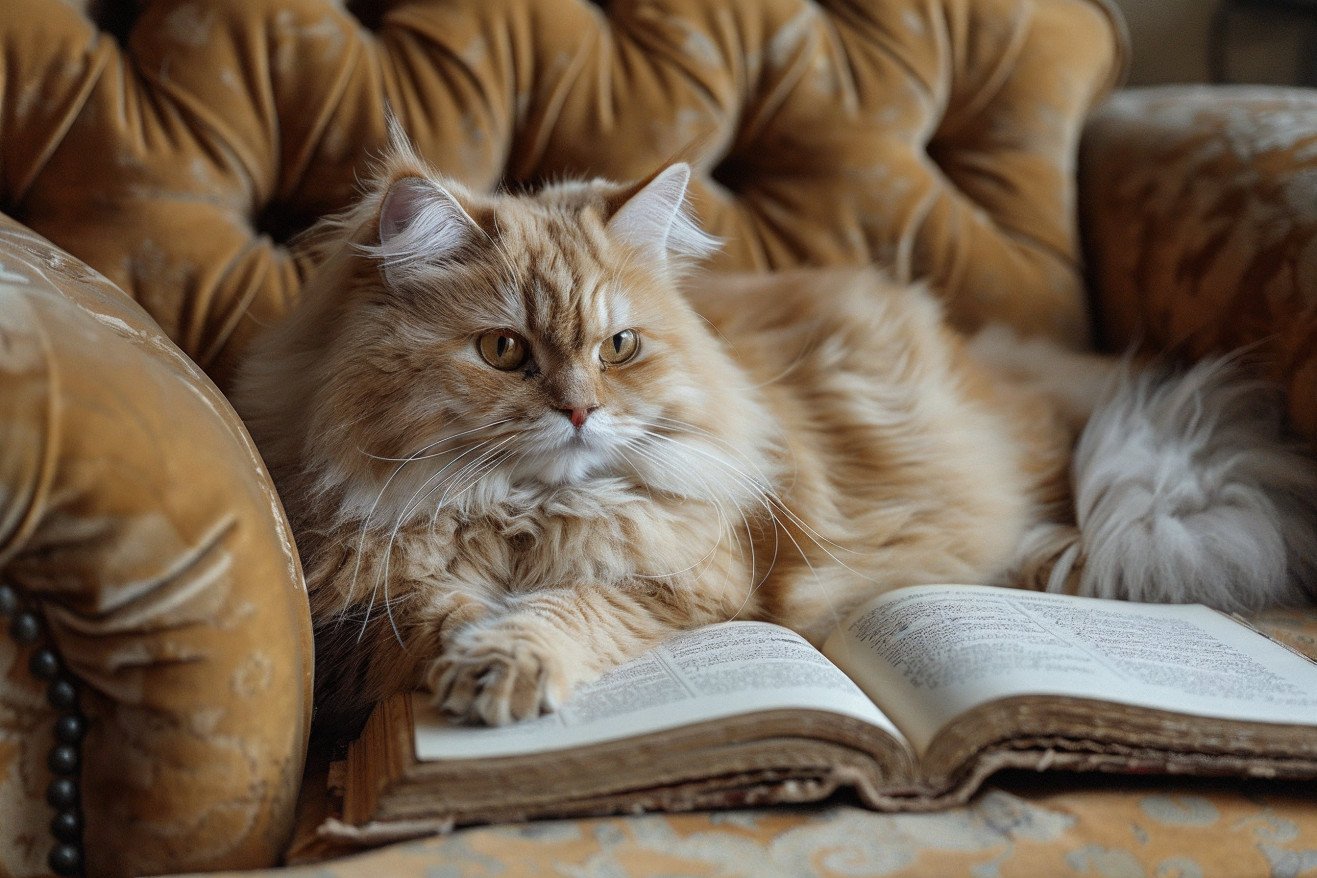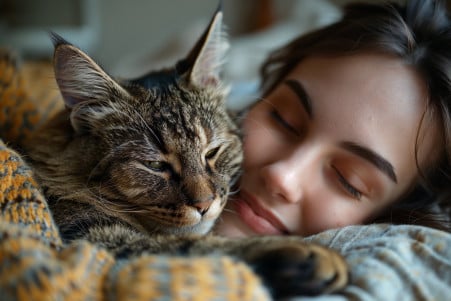The Strange Etymology of 'Pussycat': Uncovering the Origins
24 May 2024 • Updated 24 May 2024

Have you ever wondered why we call our cats "pussycats"? The word has a strange etymology that spans several centuries. The word "pussycat" is derived from the late 16th century word "puss" or "pusse," which imitated the hissing sound that cats make. When "puss" was combined with "cat," the term "pussycat" was created to describe the domesticated cat. Eventually, the term became a popular pet name for cats.
To fully understand the strange etymology of "pussycat," we will look at historical evidence, etymology research, and the impact of cultural factors to explain how the word came to be so widely used. This journey through the history of the word "pussycat" will provide a window into the relationship between language and human-animal interactions, and it will also show how we have long been connected to our furry friends.
Why are cats called pussycats?
The Etymology of 'Puss'
The word "puss" as a term for a cat can be dated back to at least the 1520s, although it was probably in use before then. According to etymological research, "puss" was probably an onomatopoeic word that imitated the sound of a cat hissing. It developed from similar words in other Germanic languages, including Dutch "poes" and German "Puus." Some etymologists believe these words have their roots in other words that meant "pouch," which could have been a reference to a cat's soft, furry body.
Although "puss" was originally used to describe cats, Language Log explains that by the 1600s, it was also being used to describe women and girls, often in a derogatory way that suggested they had some of the same unattractive, cat-like traits as the animals. By the mid-1800s, however, the word had become a term of endearment when used to describe women. This history shows how the connotations of the word have changed over time in relation to both cats and people.
The use of diminutive suffixes like "-y" and "-ie" from the 16th century onward made it easy to create pet names and terms of endearment, including "pussycat." As explained in etymological research, these hypocoristic endings turned the base "puss" into a term of endearment for cats, reflecting the special bond between humans and their pets.
Pussycat: A Term of Endearment
In contemporary English-speaking societies, "pussycat" has come to be a term of endearment for cats. As noted in a discussion on Stack Exchange, it doesn't seem to specify the sex of the cat and instead is a lighthearted, general way to refer to cats.
The fact that the word has been used in nursery rhymes, children's books, and other cultural references has only solidified its place as a cherished term. As explained in a Medium article, "pussycat" is associated with a sense of softness, fun, and the enduring bond between humans and cats, in contrast to the negative meanings of the word's root "pussy." This shows how the word has taken on a more innocent, cute meaning over time.
Pussycats in Popular Culture and Media
The word "pussycat" has been used in popular culture and media in a variety of ways, often with different implications. According to Orientalism and Erotic Multiculturalism in Popular Culture: From Princess Rajah to the Pussycat Dolls, the name and image of the musical act the "Pussycat Dolls" has had a major impact on popular culture, and is part of a larger trend in the representation of gender, sexuality, and exoticism.
The 2001 movie "Josie and the Pussycats" also parodied the use of "pussycat" in consumer culture and advertising, according to MediaVillage. As explained in an article on Medium, the movie took aim at the MTV/TRL generation's love of pop culture fads and branded products.
Although "pussycat" is often used as a term of endearment for cats, Dictionary.com points out that it can also be used as a metaphor to describe a person or thing as "not at all threatening." This indicates that the word's meaning can change depending on the context in popular culture and different audience groups.
Feminist Views on 'Pussycat' and Gender Relations
Feminist scholars have pointed out that the use of "pussycat" and "pussy" in the English language is an example of gendered power dynamics and the objectification of women. An analysis of gender roles in Angela Carter's "Puss in Boots" argues that the names of the male characters, "Puss in Boots" and "Master," are meant to denote male power, while the female characters are actually the ones in control. This shows how even the words we use can uphold patriarchal systems, even in terms that seem harmless.
An article on Bad Reputation delves into the history of the word "pussy," which originally meant a cat, but eventually became a derogatory term for female genitalia. This shows how the word is a direct result of the historical objectification and devaluation of women's sexuality. The word has also been used to feminize men and make fun of them, which also links femininity to weakness.
While some have argued that women reclaiming the word "pussy" in the 21st century can be a form of empowerment, the Everyday Sociology Blog points out that words like "catfight" and "cougar" are still used to dehumanize and stereotype women. As Glamour magazine explains, the word's roots in male-centered porn make it difficult to reclaim. In the end, the history of the word "pussycat" and its related terms shows how deeply ingrained assumptions about gender and power are in our language.
Pussy in Other Languages
Although the word "pussy" has a special place in the English language, other languages have their own versions of the word. According to Wikipedia, similar words that mean cat are used as vulgar slang for female genitalia in several European languages, including German "Muschi," French "chatte," and Dutch "poes." The Portuguese word "rata" (literally "female rat") and Norwegian "mus" ("mouse") are other animal-based slang words.
The Russian punk band Pussy Riot uses the word "pussy" in their name because they know it's a vulgar term in English, but also because it's a term of endearment for little girls in Russian. As noted, this creates a tension with the word "riot," which the group intentionally chose to include in their name.
Cultural differences in the symbolic meanings of cats may also influence the way words like "pussycat" are viewed and used. More research is needed to determine how the human-cat relationship and the language that results from it may vary around the world.
Enduring Bonds: Cats and Their Human Companions
The word "pussycat" is a testament to the deep, enduring bond between people and their pet cats. The strange journey of this word, which has evolved from an onomatopoeic imitation of a cat's meow to a term of endearment, is a fascinating example of the coevolution of human language and human-animal relationships.
Throughout its history, the word has been used in a variety of ways, some of them negative and others positive, that have reflected changing social attitudes toward cats and gender. However, the word "pussycat" has come to be a beloved and recognizable way to honor our feline friends that transcends its linguistic origins to express the essence of our relationship with these amazing animals.
In the end, the story of "pussycat" is a reminder that the words we use to describe the animals we love are connected to the deep and meaningful impact they have on our lives. Despite the oddities of language, the bond between humans and cats remains as strong and loving as ever.


